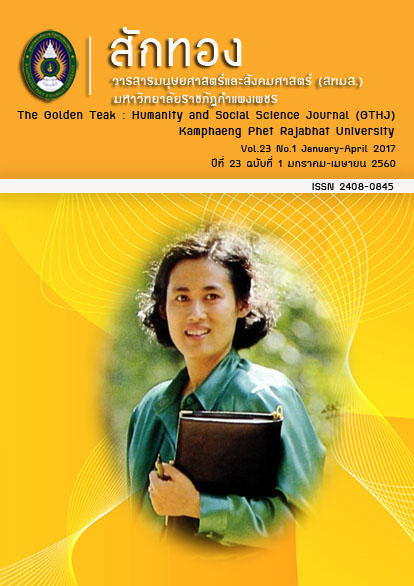รูปแบบการพัฒนาศูนย์ฝึกนักกีฬาฟุตบอลเยาวชนของสโมสรฟุตบอลอาชีพ
Main Article Content
Abstract
บทคัดย่อ
การวิจัยครั้งนี้มีวัตถุประสงค์หลักเพื่อพัฒนารูปแบบการพัฒนาศูนย์ฝึกนักกีฬาฟุตบอลเยาวชนของสโมสรฟุตบอลอาชีพ โดยมีวัตถุประสงค์เฉพาะดังนี้ 1) เพื่อศึกษาองค์ประกอบ ปัจจัยในแต่ละองค์ประกอบ และแนวทางการพัฒนาศูนย์ฝึกนักกีฬาฟุตบอลเยาวชนของสโมสรฟุตบอลอาชีพ 2) เพื่อสร้างและตรวจสอบรูปแบบการพัฒนาศูนย์ฝึกนักกีฬาฟุตบอลเยาวชนของสโมสรฟุตบอลอาชีพ 3) เพื่อประเมินรูปแบบการพัฒนาศูนย์ฝึกนักกีฬาฟุตบอลเยาวชนของสโมสรฟุตบอลอาชีพ ผลการวิจัยพบว่ารูปแบบการพัฒนาศูนย์ฝึกนักกีฬาฟุตบอลเยาวชนของสโมสรฟุตบอลอาชีพ ที่ได้จากการวิจัยครั้งนี้ ประกอบด้วย 3 องค์ประกอบ ได้แก่ องค์ประกอบที่ 1 ปัจจัยนำเข้า ประกอบด้วย 4 องค์ประกอบย่อย คือ 1) ด้านบุคลากร 2) ด้านสถานกีฬาและสิ่งอำนวยความสะดวก 3) ด้านงบประมาณ 4) ด้านการจัดการ องค์ประกอบที่ 2 กระบวนการ ประกอบด้วย 4 องค์ประกอบย่อย คือ 1) ด้านหลักสูตร 2) ด้านการจัดการฝึก 3) ด้านการพัฒนา 4) ด้านการศึกษาและสวัสดิการ และ องค์ประกอบที่ 3 ผลผลิต ประกอบด้วย 2 องค์ประกอบย่อย คือ 1) ด้านผลสำเร็จของการพัฒนา 2) ด้านเอกลักษณ์ของสโมสร และรูปแบบการพัฒนาศูนย์ฝึกนักกีฬาฟุตบอลเยาวชนของสโมสรฟุตบอลอาชีพ มีค่าความเป็นไปได้ที่ระดับมากที่สุด
The Model of Football Academy Development in Professional Football Clubs
ABSTRACT
The main purpose of this research was to develop the model of football academy development in professional football clubs. The specific purposes were 3 points: 1) to study the state of factors, elements and suggestions of football academy development in professional football clubs, 2) to construct and examine the model of football academy development in professional football clubs, and 3) to evaluate the model of football academy development in professional football clubs. The research result showed that: A model of youth football player development in football clubs from this study consisted of three main parts: 1) Input that consisted of man, money, material and management, 2) Process that consisted of curriculum, practice management, development, education and welfare, and 3) Output that consisted of the completion of the development and the club’s identity. The evaluation of the model of youth football player development in football clubs showed that the feasibility was at the very high level.
Article Details
บทความที่ได้รับการตีพิมพ์เป็นลิขสิทธิ์ของวารสาร สักทอง : วารสารมนุษยศาสตร์และสังคมศาสตร์ สถาบันวิจัยและพัฒนา มหาวิทยาลับราชภัฏกำแพงเพชร
ข้อคิดเห็นใดๆ ที่ปรากฎในวารสารเป็นวรรณกรรมของผู้เขียนโดยเฉพาะ ซึ่งมหาวิทยาลัยราชภัฏกำแพงเพชรและบรรณาธิการไม่จำเป็นต้องเห็นด้วย


